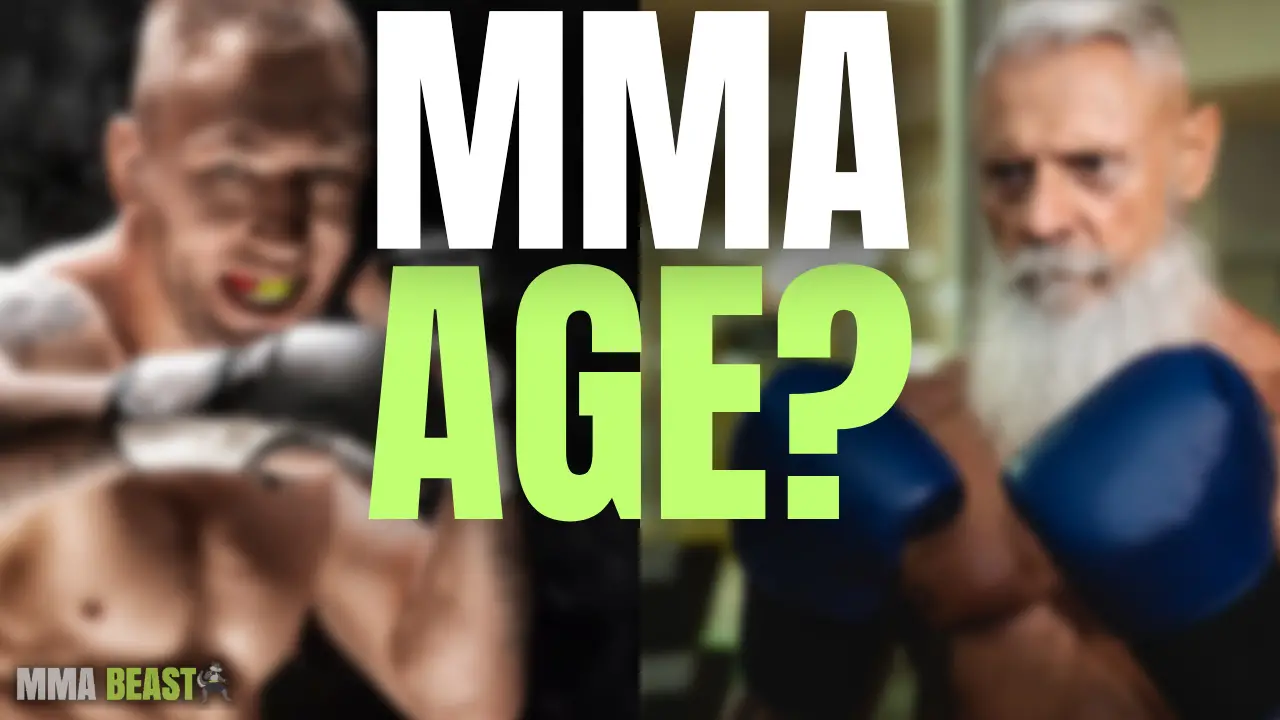
Mixed Martial Arts, or MMA for short, is an exciting and unpredictable sport that has gained in popularity over the last several decades. Fans of the sport have long wondered why it takes place inside an octagon-shaped cage instead of a traditional boxing ring – what advantages does this eight sided arena provide?
In this article, we’ll explore why MMA uses an octagon as its primary fighting surface and discuss some of the benefits it offers athletes and fans alike.
Improved Safety For MMA Athletes
Mixed martial arts (MMA) is an intense and aggressive sport that requires the utmost safety for athletes. With this in mind, MMA promotions have adopted the octagon as their preferred arena for fights due to its increased protection and comfort it provides competitors.
The eight-sided shape of the ring offers fighters much higher protection than a traditional squared boxing ring by forcing them to stay away from the edges at all times. This reduces the chances of being knocked into the ropes or corners and increases athlete comfort throughout bouts. The octagon also allows for more room to move around during combat situations, which can be crucial when trying to avoid strikes or set up submissions maneuvers.
Fighters are able to utilize strong footwork techniques while they circle one another inside the confines of the cage, allowing them to create more space between themselves and their opponent if needed. As such, opponents tend to feel less confined within an octagonal enclosure compared with a square shaped one – leading to better performances overall and fewer injuries sustained in each fight night.
Athletes competing in MMA understand how important it is for them to remain safe while competing; thus making sure that both participants have equal footing is paramount before any bout begins. Through its unique design features, an octagonal ring provides competitors with proper distance control that helps keep them out of harm’s way. Therefore, most promotions opt for this type of fighting platform over other alternatives – ensuring that athletes receive maximum protection when vying for victory inside a professional mixed martial arts event.
Why does MMA use an Octagon?
The octagon-shaped fighting surface was first introduced by the Ultimate Fighting Championship (UFC) in 1993. At the time, UFC was a new and controversial sport, combining techniques from various martial arts disciplines. They needed a fighting surface that would be safe for competitors but also allow for dynamic movement and striking. The eight sides of an octagon provide ample space for fighters to move around, strike, and grapple without being confined to a small area like a traditional boxing ring.
But why not use other shapes like a hexagon or even just a square? The angles of an octagon create more space in the centre compared to other shapes with equal measurements. This allows for more room for fighters to engage with each other without being restricted by corners or edges.
Why UFC decided to use Octagon in MMA
The UFC, the largest and most well-known promotion in MMA, has used an octagon for their events since the organization’s inception in 1993. The use of the octagon has now become synonymous with the sport of MMA and is often imitated by other promotions.
So while there may not be a concrete reason why MMA specifically uses an octagon rather than another shape, it has proven to be a successful and practical option for both competitors and spectators alike. And as long as the octagon continues to provide a safe and dynamic fighting surface, it looks like it will remain a staple in the world of MMA.
Has MMA always been in an Octagon?
No, it has not. Before the popularization of MMA and the creation of organizations like the UFC, a variety of fighting surfaces were used in competitions, including boxing rings and roped rectangles.
The shape allows for more room for fighters to move and engage in dynamic techniques, while also providing added safety with the padded walls surrounding the competitors. Additionally, the octagon provides an exciting visual aspect for spectators in attendance and watching at home.
Overall, the use of an octagon has proven beneficial for both competitors and fans in the world of MMA.
Do MMA fighters have to train in an Octagon?
Not necessarily. While it is advantageous for fighters to become familiar with the octagon and how it may affect their tactics, training in one is not required as long as they are prepared for any potential surface they may encounter in a match. Ultimately, what matters most is that fighters are able to adapt and excel in any environment.
But practicing in an octagon can definitely give fighters a leg up on the competition. So while it may not be necessary, many MMA athletes do train in an octagon to give themselves every advantage possible when stepping into the ring.
MMA Training Mats
Soft Foam to cushion falls
Safe and Premium Quality MMA Gym Mat
- Workout Mat Covers 48 SQ
- Waterproof and Easy to Clean
- Easy to Assemble
- Durable Cushion and Multiple Uses
Enhanced Visibility For Spectators
MMA fighters need an octagon for the best possible performance. The distinct shape of the octagon allows for a refined choreography, which in turn facilitates more accurate judging. Furthermore, its unique design offers enhanced visibility and exciting entertainment opportunities to spectators.
The eight-sided structure creates multiple viewing angles for all audiences to observe both fighters at once no matter where they are positioned inside the cage. Fans can experience every move from any seat without having to worry about losing sight of one fighter or another due to obstructions like walls, corners, and posts found in traditional boxing rings.
By providing superior views of the bouts, MMA fights become even more thrilling as fans get closer than ever before to the action unfolding right in front of them.
From jabs and hooks to takedowns and submissions – the excitement is intensified by the following list:
- Increased clarity on techniques used by fighters
- Uninterrupted flow across rounds
- Clarity on judges’ decisions
- Enhanced audience engagement throughout fight
This combination of features provides an unmatched level of entertaining spectating that can only be found in MMA events with their distinctive octagonal cages – making it one of the most popular combat sports today!
Easier Movement For Fighters
The octagon shape has been an integral part of mixed martial arts since its inception, and for good reason. Its distinct eight-sided shape offers many advantages to both fighters and spectators alike.
Beyond just enhanced visibility in the stands, the octagonal ring allows fighters greater control when employing striking or grappling techniques. For starters, being inside a circular cage would limit movement due to corners; however, with the unique design of an octagon comes greater freedom for athletes to move around freely while delivering controlled strikes or performing takedowns and submissions.
With four additional sides compared to traditional boxing rings, there’s more room for competitors to maneuver without fear of running out of space. Additionally, the increased area on all sides gives MMA fighters plenty of opportunities to execute their strategies from any angle they choose.
This can lead to some exciting exchanges as opponents jockey for position within the confines of the 8-walled structure. Not only do these extra angles create dynamic scrambles and transitions between positions during fights but also allow athletes to unleash powerful attacks that wouldn’t otherwise be possible in a square or rectangular environment.
Strategic Advantages For Competitors
MMA fighters have a lot to consider when they enter the cage and need to be strategic in order to succeed. The octagon provides an array of advantages that help competitors make use of their game tactics and fight smartly.
Firstly, the shape itself offers strategic placement for fighters to use during matches – there are eight corners which allow opponents to move around and strategize accordingly, making it difficult for their opponent to catch them off guard or predict where they will go next. Additionally, the even spacing between each corner means no one fighter has any more room than another, allowing both participants equal access within the ring.
The size of the Octagon is also key in providing a fair playing field; at 30ft across with 6ft high walls surrounding it on all sides, there’s just enough space for both combatants to maneuver without feeling overly restricted or limited. This helps ensure fights are as balanced and exciting as possible, with neither combatant having too much of an advantage over the other due to environmental factors.
Furthermore:
- Fighters can see their entire surroundings easily without ever needing to turn their back on their opponent
- The open floorplan allows athletes to cover long distances quickly while staying safe from strikes
- 8 edges provide plenty of opportunities for fast evasion techniques like slipping punches and dodging kicks
- Each side creates angles that can be used strategically against your opponent by cutting off pathways and forcing them into less advantageous positions.
These elements create unique opportunities for fighters who know exactly how exploit these features and gain tactical ground throughout a match. Whether you’re looking for striking distance or putting pressure on your foe — the Octagon gives MMA competitors ample opportunity do so effectively and efficiently.
An Intimidating Aesthetic For Viewers
The octagon is a symbol of great power and cultural significance in the world of MMA, which makes it an instantly recognizable shape. It’s no wonder that so many promotions have adopted this intimidating aesthetic for viewers to enjoy.
With its eight sides and sharp angles, the octagon represents strength and endurance, as well as providing unique branding opportunities for promoters looking to stand out from their competition.
MMA fighters must be ready to fight on all fronts when they enter the cage or ring and the same could be said about any organization hoping to make a name for themselves by promoting events. The interlocking panels of an octagonal cage represent unity while also allowing a diverse range of footage options due to its variety of angles. This provides broadcasters with accessible yet visually stimulating content that helps them attract more viewers than traditional boxing rings or squared cages can offer.
As both a physical barrier between opponents and symbolic representation of mental mettle, the octagon holds significant cultural symbolism within martial arts culture. Its presence at major MMA events gives audiences another layer of entertainment beyond just watching two combatants engage in combat; it serves as a reminder that there are greater forces at play during each match-up.
By using an octagonal cage or ring, MMA organizations create an atmosphere where warriors can battle one another without fear or hesitation – something truly special for fans who turn up time after time!
Conclusion and final thoughts 💭
MMA is one of the most exciting combat sports in existence. With its unique octagonal cage, it offers athletes improved safety, enhanced visibility for spectators, easier movement for fighters and strategic advantages that can’t be found anywhere else.
From an aesthetic perspective, the intimidating structure provides viewers with a thrilling experience they won’t soon forget. While there are many elements that make MMA so captivating, the octagon has become synonymous with the sport itself – proving to be essential in creating unforgettable moments that will live on long after each fight has ended.




Leave a Reply